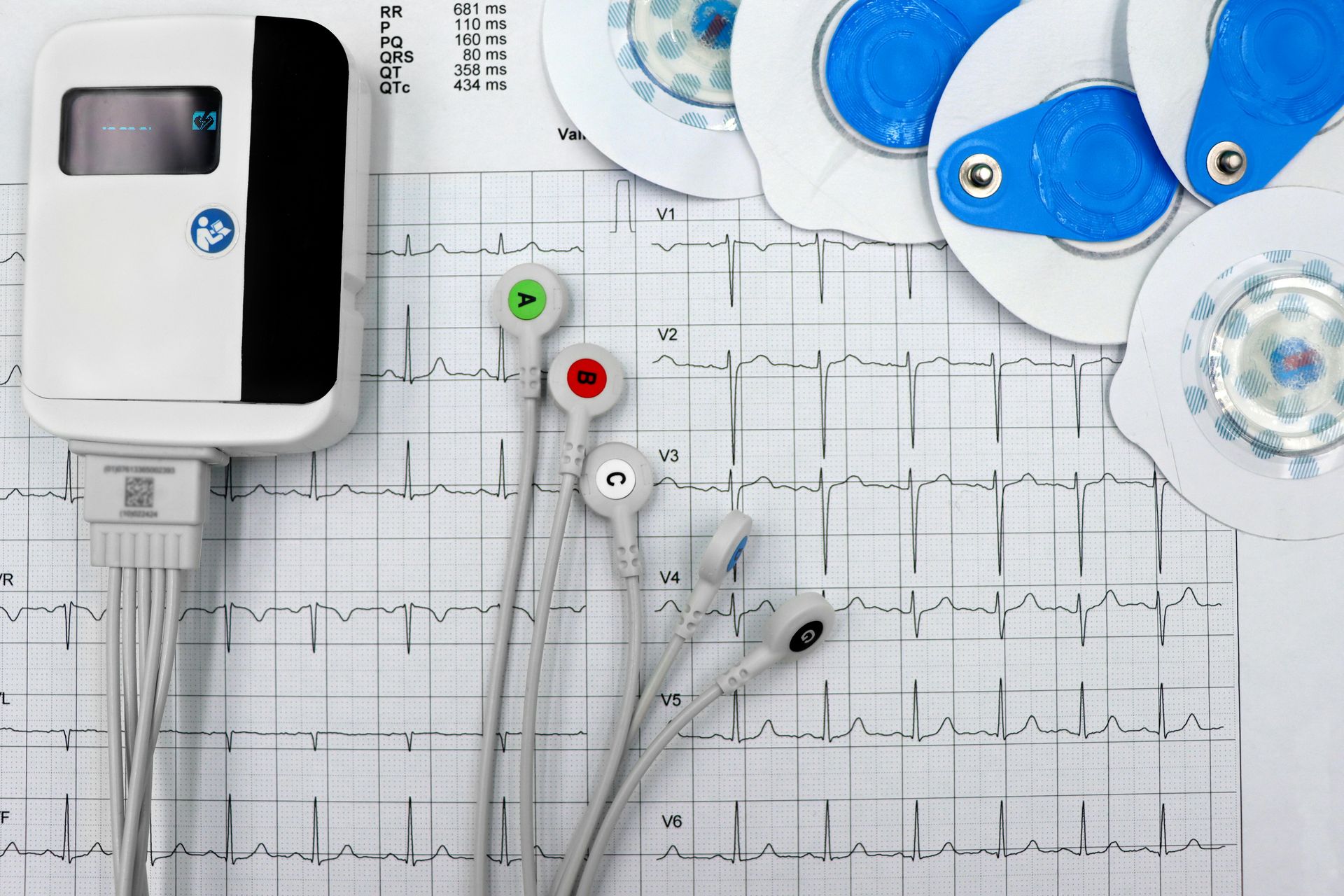Holter Testing
What is Holter Testing?
Holter testing for paediatric cardiology patients works similarly to adult Holter testing but with adaptations to make it more child-friendly. It’s a safe, non-invasive way to continuously monitor a child's heart rhythm, usually for 24-48 hours. This is especially helpful for detecting heart rhythm issues that might not show up during a brief ECG, especially when symptoms are intermittent.
Why Use Holter Testing for Children?
Holter testing is often recommended for children with:
- Dizziness or fainting episodes that might suggest an irregular heart rhythm.
- Palpitations or rapid heartbeat sensations that could indicate arrhythmias.
- Unexplained chest pain or discomfort, especially if routine tests don’t reveal a cause.
- Monitoring for known heart conditions like congenital heart disease to check how their heart rate changes over time.
- Follow-up after surgery or medication adjustments to see how the treatment is affecting their heart rhythm.
How Does Holter Testing Work for Kids?
- Attaching the Monitor: Adhesive electrodes attach a small device (the Holter monitor) to the child’s chest. The monitor is usually about the size of a small phone and worn around the neck or attached to a belt or shoulder strap. The team might use extra tape or other gentle adhesives for very young children to ensure the electrodes stay in place.
- Daily Activities: Kids are encouraged to go about their regular activities, such as playing, going to school, or light exercise, as long as these won’t disrupt the monitor. This gives doctors a clearer picture of how the heart behaves during everyday activities. Parents might be asked to help with the diary, noting any symptoms like dizziness, chest pain, or fast heartbeat and the time these occurred.
- Comfort and Safety: The Holter test is designed to be as comfortable as possible, though some kids may initially feel awkward with the device. Parents can help by choosing loose-fitting clothes for their child on the testing day and explaining that the monitor will only be on for a day or two. The electrodes are easy to remove, but children with sensitive skin may experience slight redness or irritation.
Benefits of Holter Testing
Children with paediatric cardiac conditions often need detailed heart monitoring, and Holter testing is an excellent tool for this because:
- It can detect irregular heart rhythms that occur occasionally and may not show up in short tests.
- It helps doctors see how the heart responds to daily activities, sleep, and mild stress, which gives a more realistic picture of their heart function.
- For children on medications or with a pacemaker, the Holter monitor can check how well these treatments are helping.
- It provides valuable information about heart rate patterns and changes, which might be especially important in children with congenital heart defects or other long-term heart issues.
- Types of Holter Testing and Options for Kids
- Standard Holter Monitors: Most common for kids, used over 24-48 hours.
- Extended Holter Monitors: Worn for up to two weeks if symptoms are less frequent.
- Patch Holter Monitors: A smaller, lightweight patch that can be worn like a sticker on the chest. This is ideal for active children or those uncomfortable with bulkier monitors.
Preparing for a Paediatric Holter Test
- Avoid lotions or oils on the chest area that may interfere with electrode adhesion.
- Dress comfortably in loose clothing for easy attachment of electrodes and movement.
- Shaving (if necessary): Some areas may need to be shaved for older children or teens with chest hair.
- Medication List: Parents should inform the cardiologist about any medications the child is taking, as these may impact heart rhythm.

What Happens After Holter Testing?
When the test is over, the child returns to the clinic to have the electrodes removed. Paediatric cardiologists analyse the data to look for irregular heart rhythms or patterns that could explain the child’s symptoms. Parents can usually expect results within a week or so and can discuss the findings with their child’s cardiologist.
Benefits and Safety of Holter Testing in Children
Holter testing is highly beneficial because it provides real-world data on a child’s heart activity over a full day or more. It’s very safe, though some children may find it slightly uncomfortable or experience mild skin irritation. Holter testing is invaluable in paediatric cardiology for identifying arrhythmias early and managing and monitoring conditions that require close follow-up.
Holter testing and alternatives like event monitors or implantable loop recorders for longer monitoring are reliable and child-friendly ways to gather essential data for a child’s cardiac health.

